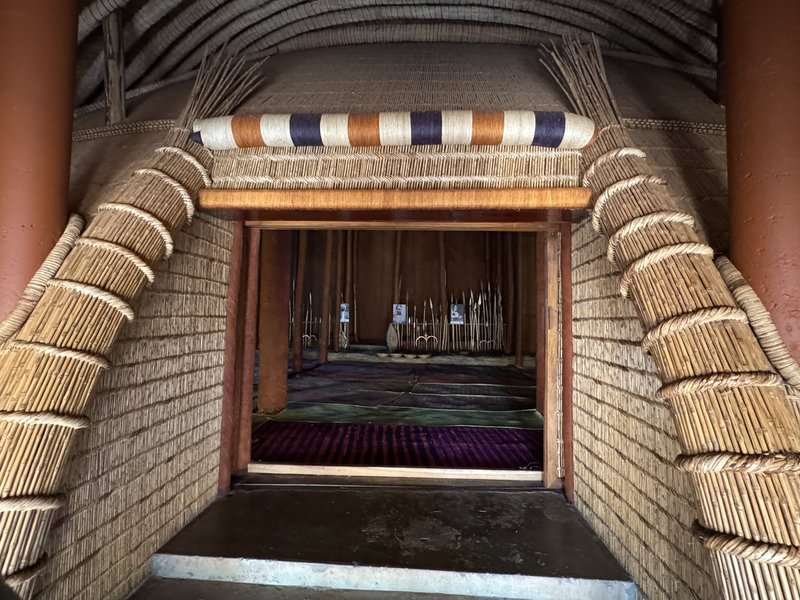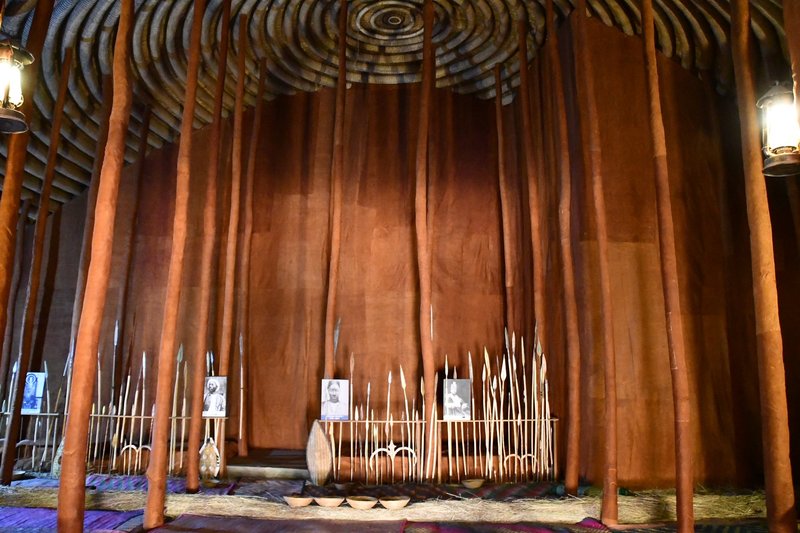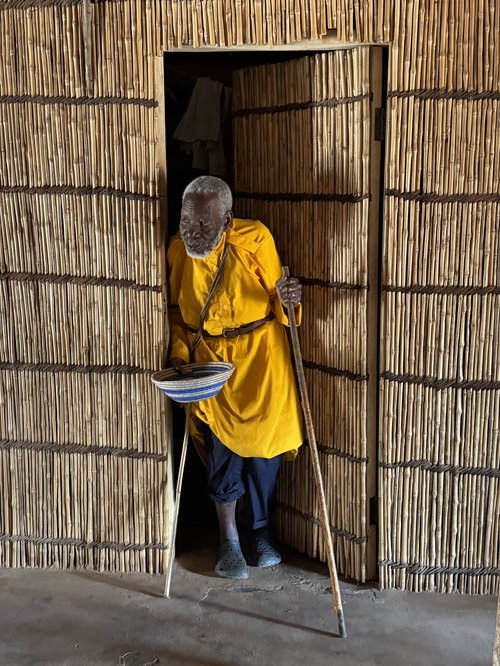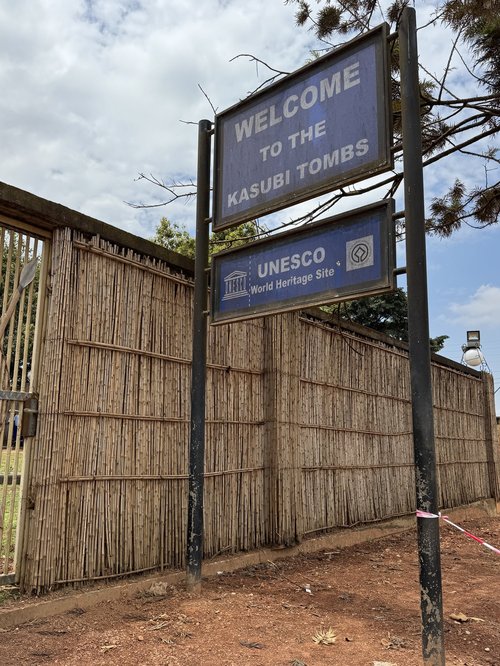Our first stop on our road trip through Uganda was a visit to the Kasubi Tombs, the resting place of the Buganda kings. To be honest, we didn’t have very high expectations before going, and some in our group weren’t even planning to join. In the end, we all went together – and everyone agreed it turned out to be a truly memorable experience.
Much of this was thanks to our guide, Fredric, whose knowledge and engaging storytelling brought the history to life. He guided us through the traditions of the Buganda kingdom, the lives of the four Kabakas (kings) buried here, and how their legacy connects to the wider history of Uganda.
The tombs suffered a devastating fire in 2010, which destroyed the main building. Fortunately, the graves themselves were untouched, as the kings are buried deep underground. Rebuilding the tombs was a challenge, since much of the old construction knowledge had been lost. After several attempts, they returned to the architectural style of the original 1882 structure. This time, the process has been carefully documented, and photos of the restoration are displayed on site.
Built in traditional style with natural materials, the tombs are considered the largest grass-thatched structure in the world. While modern reinforcements like concrete have been added for stability, the architectural style remains striking and unlike anything we have seen before.

The hight inside is 9,5 m, with a beautifully patterned ceiling. Inside pillars – including the concrete ones, are covered with cloth fabric made from the soft bark of the fig tree (see Els review)

The inner part of the tomb is a symbolic forest, into which visitors are not allowed. The kings are buried beneath this sacred area. From the visible coffins, tunnels lead down to their actual resting places.
Traditionally the kings don’t die, they disappear. This construction is symbolic as the kings are «disappearing « into the spirits» of the forest.
In front of the coffins, spears and traditional weapons are displayed,
The building is not yet officially inaugurated. This is expected to happen when the next heir to the throne is of age – he is currently 15 years old, and there are hopes that the ceremony may take place as soon as next year.
At the entrance, parts of the original materials from the palace still remain in the ceiling. This is also where the gatekeepers live – a role that has been passed down through generations. One of them is now 100 years old and has been in service for an astonishing 84 years, having taken over from his grandfather who was present when the palace was first built.

We found the plaque outside the gate.

Overall, our visit to the Kasubi Tombs was far more rewarding than we anticipated. The combination of remarkable architecture, a story of resilience after the fire, and a passionate guide made this an interesting visit.
When in Kampala or Entebbe, take a boat trip through Mabamba Swamp to search for the elusive Shoebill stork – one of the very best places to encounter this rare, prehistoric-looking bird.